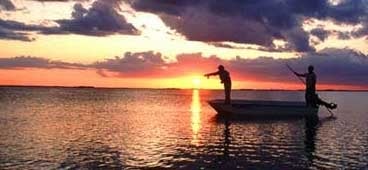
FFSW editorial main
Discuss this topic in our forum here
Many East Coast fly-fishermen think there is little or no fly-fishing on the West Coast. Perhaps it seems that way because I’m an East Coaster, but I’ve heard for years that there’s only a small population of saltwater fly-rodders on the West Coast. The more I travel and the more people I meet, the more I realize that idea is just plain wrong.
Another prevalent notion is that West Coasters don’t fish their home waters – they all travel to Baja. Some people will immediately say that the fishing in the Pacific is hardly as productive as it is in the Atlantic, but I’m not sure that’s true.
Maybe the Pacific coastal species don’t get as large and only come in bizarre shapes and colors, but they are there. And while it’s definitely a different fishery, I think all fishermen are basically the same. Sure, they’d like to fish Baja all the time, but since they can’t, they take advantage of the waters they can fish. It’s like suggesting that all East Coasters fish only the Bahamas or the Keys. It’s a good thing that’s not true or I wouldn’t have fished in over two years.
Every time I talk to friends from that side of the country, I find out about incredible fisheries that we East Coasters don’t know exist. I was recently lamenting to Glenn Young about my one experience with dog salmon and how hard they are to get in open water. Young, who works for Gamakatsu hooks and is a former guide in Washington state, gave me the most bizarre look and then told me about a purely saltwater pass that crawls with giant dog salmon at certain times of the year. We’re talking fish to 20 pounds! He said it like it’s the oldest piece of information around.

I was similarly floored when I found out that Southern California has such an interesting fishery both inshore and off, including makos, albacore, bonito and sea bass (see Saltspray on page 18). I haven’t had the privilege of fishing stripers in northern California yet, but from what I’ve heard, at times it’s every bit as impressive as the fishing in the Northeast. Sure, you have to know where to look, and sometimes you have to run a good distance, but that holds true for any location.
Now, some of the species that West Coasters fish for strike those of us who grew up with giant stripers, bluefish and bull reds at our doorsteps as odd. But frankly, if it’s close by, then I don’t care what it is – I’ll figure out how to take it. Paul Johnson of Sage Manufacturing always smiles when he tells me about chasing 6-inch-long starry flounder on a flat near his home on Bainbridge Island.
Is he serious? Half-a-foot-long flatfish? Well, that’s what’s in his backyard, and that’s what he fishes for to pass an hour in the afternoon. Within a short drive, he casts at a variety of salmon that, pound for pound, fight just as hard as any striper or red. Heck, I spend a lot of time chasing 1-pound ladyfish when I can’t locate trout or reds in my home waters. They aren’t huge, but they are reliable, and, more important, they’ll take a fly and bend a rod.
My point is that there appears to be a bias against the Left Coast when it comes to fishing in general and fly-fishing in particular. But it is a different type of environment with a unique kind of fishing. And one thing I’ve come to realize is that “exotic” isn’t limited to describing tropical destinations. That’s one reason you’ll see more coverage of the West Coast in this magazine from now on, like Robert Ketley’s article “Cali Rock Hounds” on page 56 of this issue.
As for me, the more I find out about the fisheries on the “other” coast, the more I look forward to exploring a whole new place to cast a fly right here at home.
Discuss this topic in our forum here









